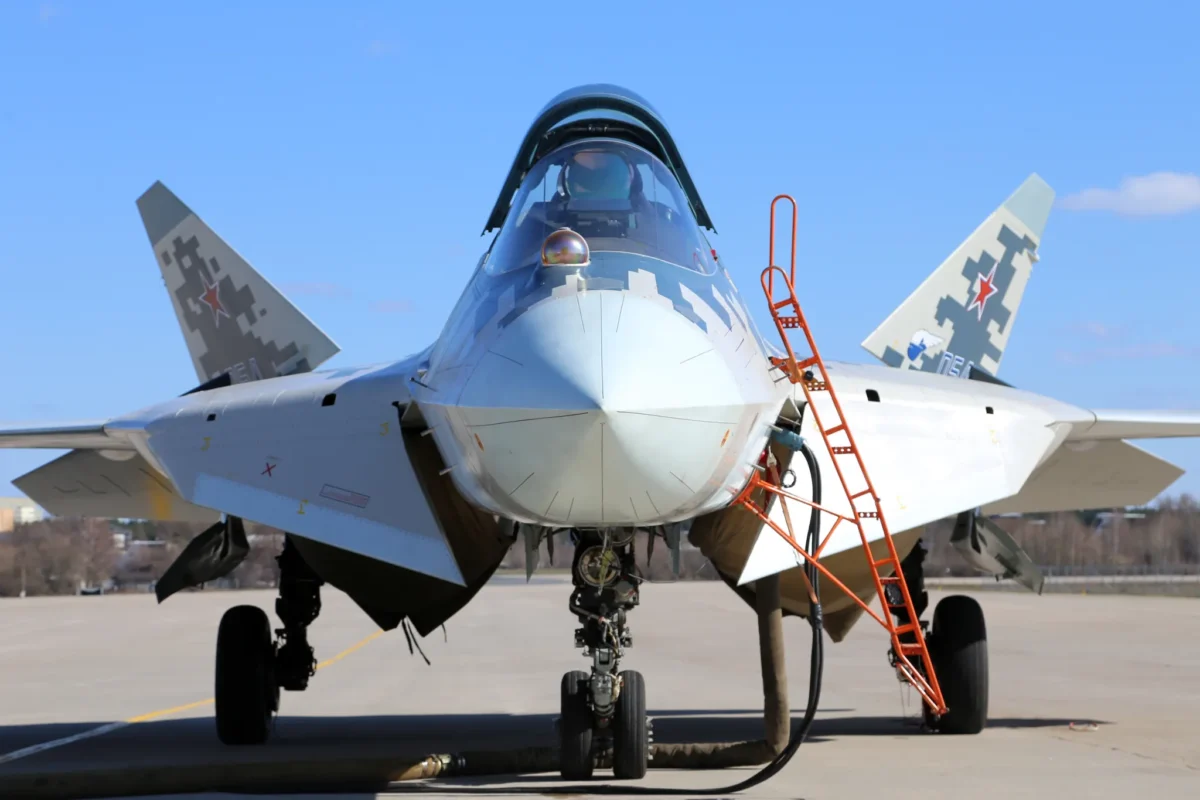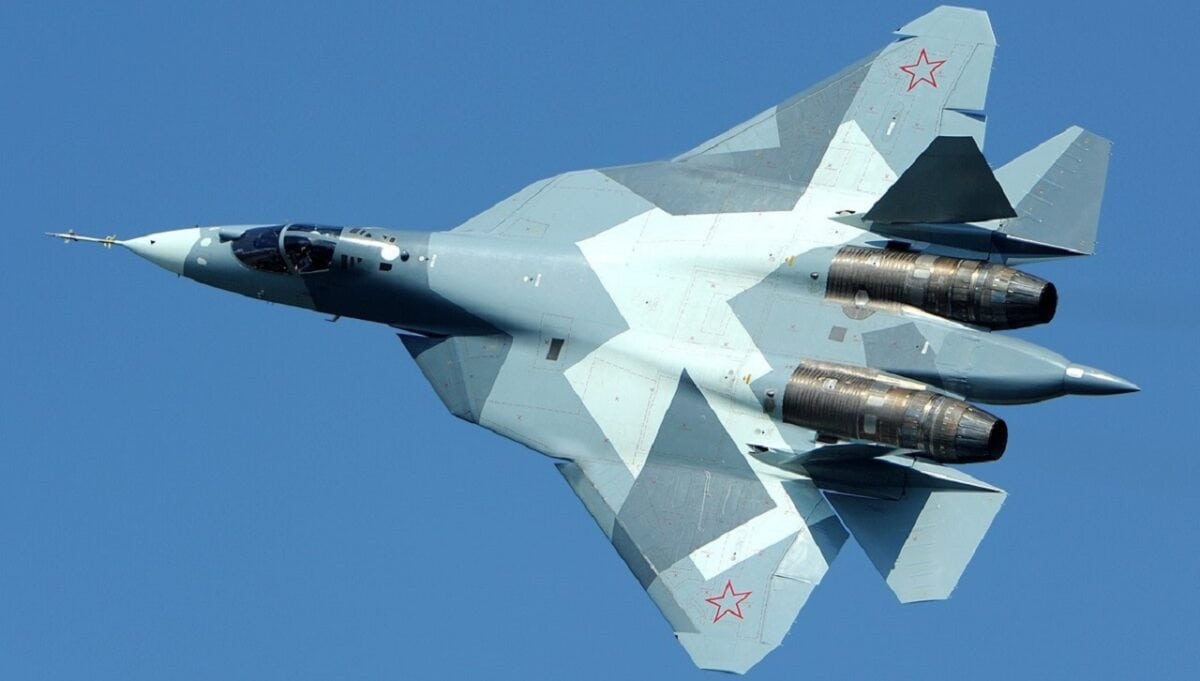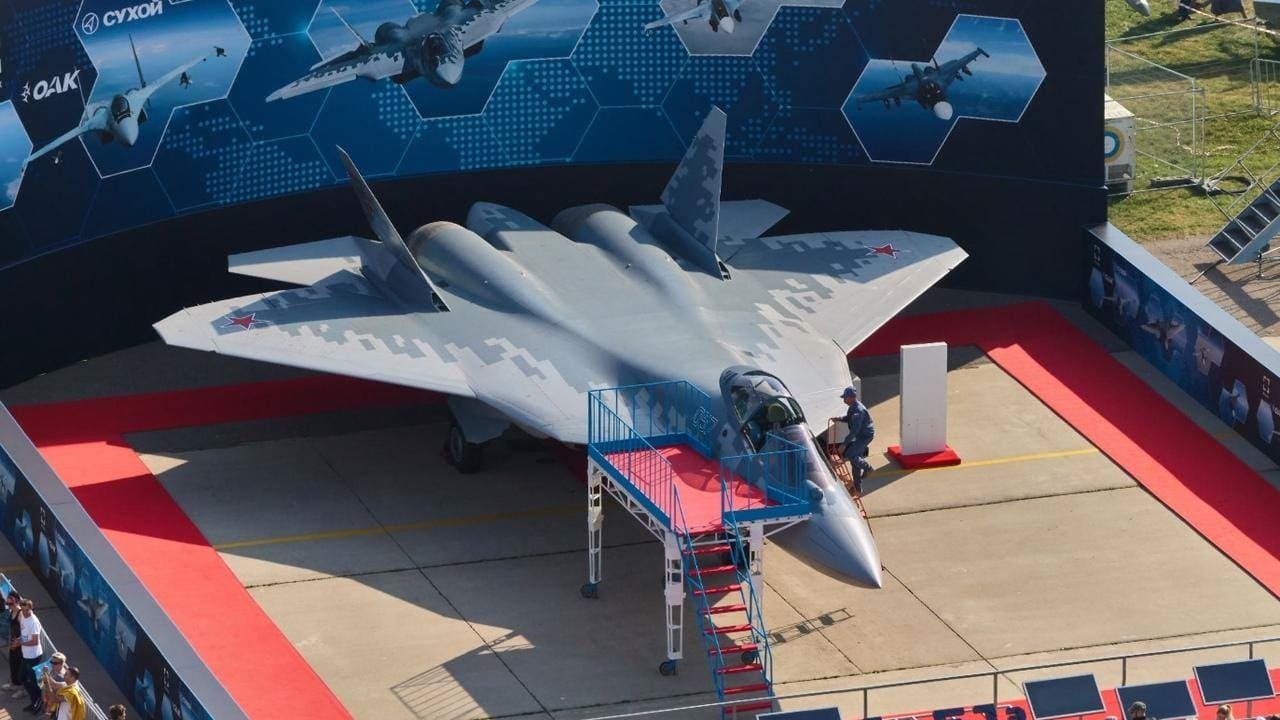Su-57 Production (Finally) Ramps Up: During the Second World War, the most produced aircraft wasn’t a U.S. P-47 Thunderbolt, a British Spitfire, or even a German Bf-109 – rather it was an Ilyushin Il-2. By the end of the war, the Soviet Union had produced 36,183 the agile fighters. Of course, it should be noted that the United States produced a wider variety of combat aircraft and was able to supply those warbirds to its allies around the globe.
Yet, the point that the Soviet Union was once able to produce the aircraft – during a major war – in such significant numbers is noteworthy in that Russia has continued to struggle to reach serial production of the Sukhoi Su-57. Since the aircraft officially entered service with the Russian Aerospace Forces (VKS) in December 2020, only a handful of aircraft has been built.
Despite that fact, Moscow has tried to put a positive spin on the number built.
It was in August that Russian media touted the fact that four serial-produced Su-57 fifth-generational multirole fighters had finally rolled off the assembly line.
“Under a state contract with the Russian Defense Ministry for the serial production of Su-57s, four aircraft have been built,” said Yury Slyusar, CEO of the United Aircraft Corporation (UAC), a subsidiary of the state-owned tech conglomerate Rostec, during the Army 2022 forum last summer.
“This year, there are plans to deliver the next batch of planes,” Slyusar added. “The United Aircraft Corporation fulfills work with subcontractors in accordance with the state contract signed.”
According to the reports, Russia’s Aerospace Force will receive 22 Su-57 fighters by late 2024 and their number will increase to 76 by 2028. Rostec is also building a new facility that will be utilized to test the aircraft and other advanced Russian military hardware. Of course, the building – much like the aircraft – actually has to be built, and Moscow has a bad track record of actually producing any of its advanced hardware.
Su-57: Increased Production of Components
The military defense conglomerate is now working on increasing the manufacture of the aluminum honeycomb cores, which are used in the modern fighter jet but also in rocketry built in Russia. Upwards of 600 cubic meters of construction materials will be produced annually, but it is unclear how many aircraft that will translate to.
Even as the Kremlin is working to domestically produce the cores, it will continue to struggle to serial produce the Su-57 due to international sanctions that resulted in a shortage of microchips and other electronic components. Building a Su-57 (NATO reporting name “Felon”) is a bit more complicated than producing the Ilyushin Il-2.
Impacting Exports
Sanctions are certainly impacting what Russia can import, and that will in turn impact what the Kremlin will be able to export. As Defense News reported this week, Russia’s aerospace leadership had planned to market the Su-57 and its highly touted derivative the Su-75 to several foreign military buyers. “These plans now appear to be in ruins.”
At best export models of the Su-57 are unlikely to even be available until the end of the decade, and the Su-75 “Checkmate” could be taken off the board entirely – as it has only been realized in models and computer graphics. That will leave the Sukhoi Su-35 as the only Russian military aircraft in serial production for foreign buyers.

Russia’s Su-57 Stealth Fighter. Image Credit: Creative Commons.

Su-57. Image Credit: Creative Commons.
Without international sales, it simply remains unclear how many Su-57s Russia can even afford.
A Senior Editor for 19FortyFive, Peter Suciu is a Michigan-based writer. He has contributed to more than four dozen magazines, newspapers, and websites with over 3,000 published pieces over a twenty-year career in journalism. He regularly writes about military hardware, firearms history, cybersecurity, and international affairs. Peter is also a Contributing Writer for Forbes. You can follow him on Twitter: @PeterSuciu.

